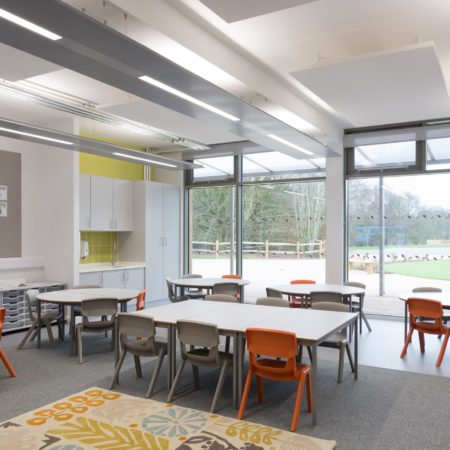Well Ventilated Schools Are Healthier Schools
There’s a well-documented link between good ventilation and effective learning. The design of classroom ventilation systems affects how easily you can control internal temperatures and regulate the environment to ensure CO2 concentrations in classrooms stay at a healthy level.
Now there’s an additional factor that highlights why ventilation is at the heart of good classroom design. Covid-19 revealed how easily viruses circulate in enclosed spaces. Current policy is aimed at learning to live with Covid rather than on elimination, and schools are acutely aware of how disruptive outbreaks of any viral infection can be.
Distancing is an effective way to minimise close contact transmission through coughing and sneezing, which produce larger droplets that reach ground level within about 1.5m. Distancing is less effective against prolonged exposure to low concentration aerosols with small particles that can remain airborne for several minutes. Here, excellent circulation of fresh air is essential, whether through windows or mechanical systems.
The Federation of European Heating, Ventilation and Air Conditioning Associations (REHVA) has produced detailed guidance that schools will find helpful in reducing the risks of airborne transmission.
New Build Schools and Classrooms
New school buildings that are currently being commissioned should be using the best research available about aerosol distribution and ventilation. It must be a priority for designs to maximise the circulation of fresh air to reduce the possibility of far-field transmission of infections.
As construction becomes more digitally-enabled and better integrated with the design process there are far better opportunities to model healthier airflows – and ensure that modelled performance is reproduced in a real building.
Controlling airflow to keep temperature control and ventilation in balance has a relationship with air-tightness. Draughts caused by gaps between walls, ceilings and roofs not only affect air circulation, they also degrade thermal efficiency. Reducing fresh air circulation to compensate for poor insulation or air-tightness is no longer an option.
With existing classrooms, ventilation is a difficult issue to resolve but for new schools and extensions, it is much more controllable. Modern Methods of Construction (MMC) together with early engagement from engineers who specialise in managed airflows offers an effective route to healthy learning environments.
Osborne has many years’ experience in delivering school and college buildings using MMC. We also have a collaborative approach that ensures all appropriate expertise is engaged early enough to make a meaningful difference.
For more information about how Osborne applies MMC to education building programmes contact Mike Peskin ([email protected]).
Find out more about how Osborne deliver Education projects on time and faster by visiting our free resource centre.

